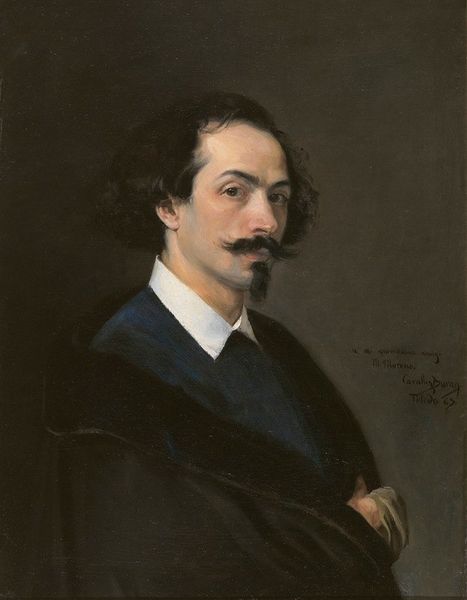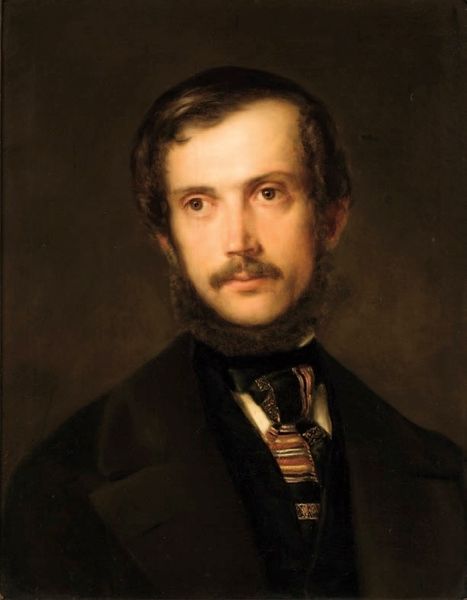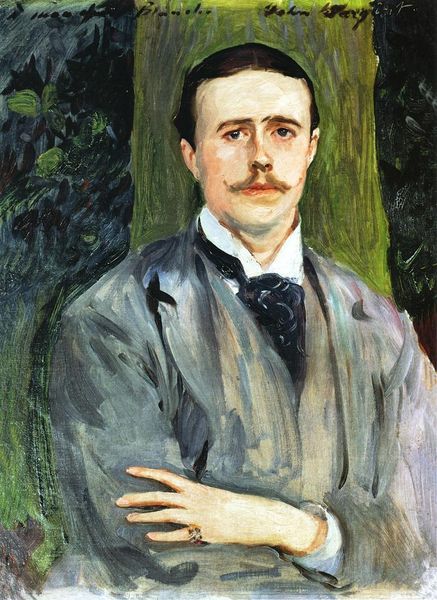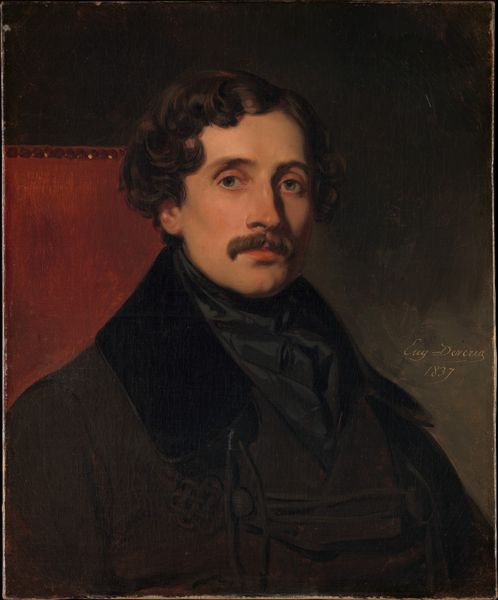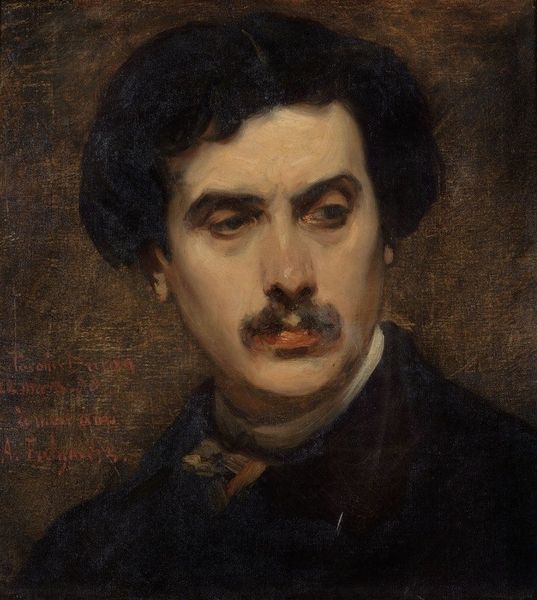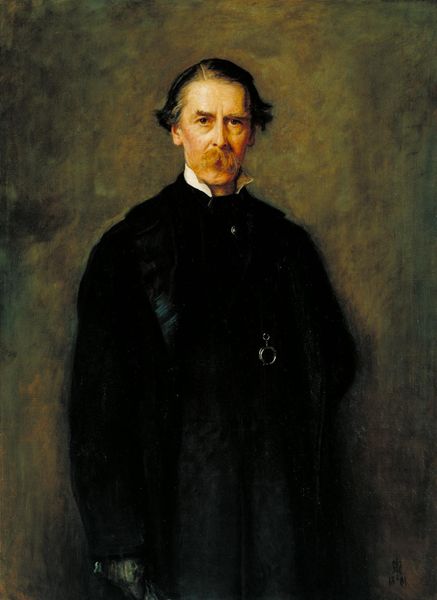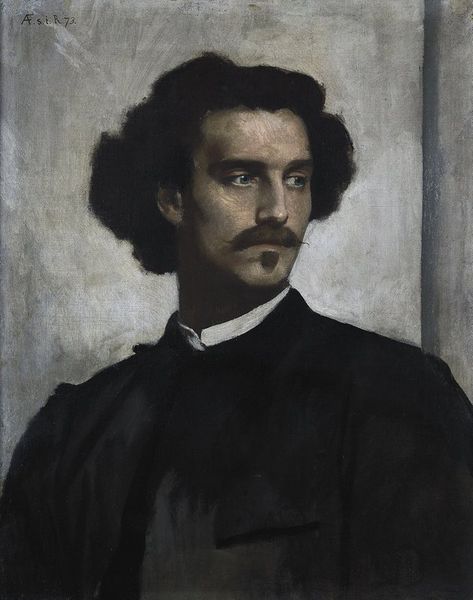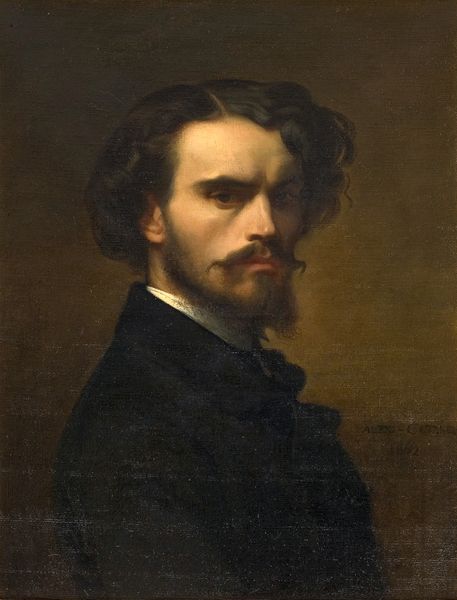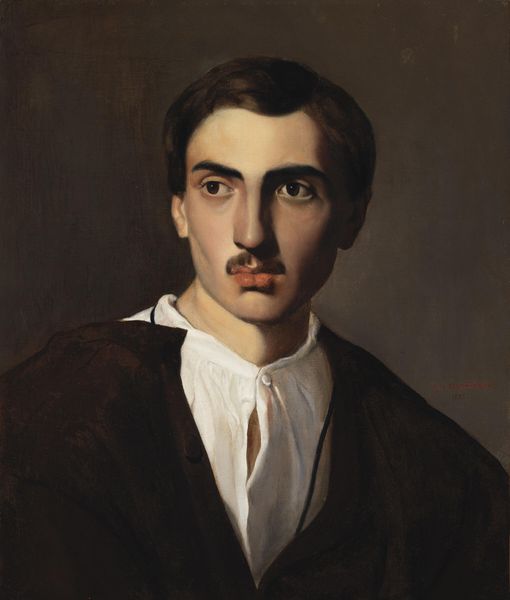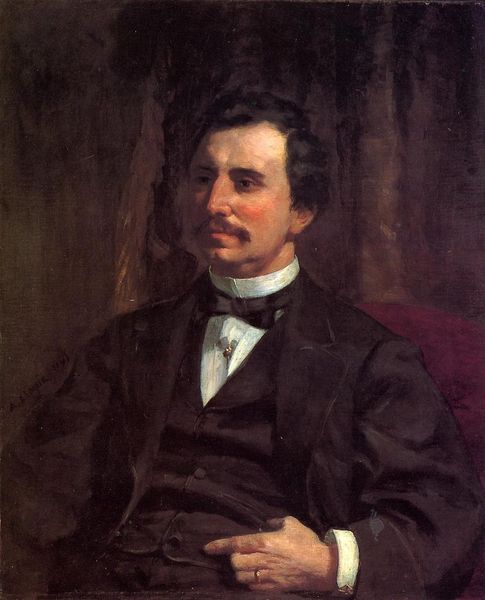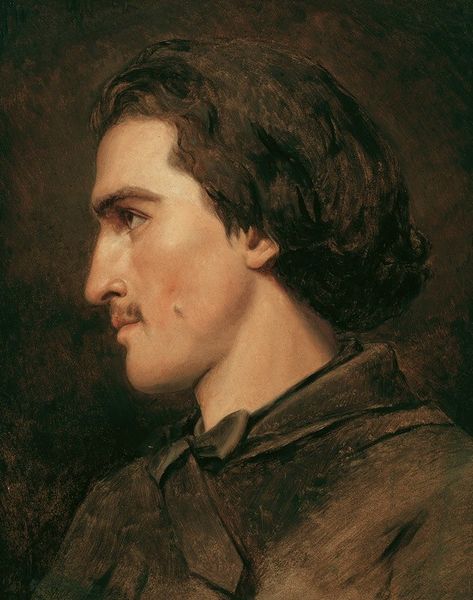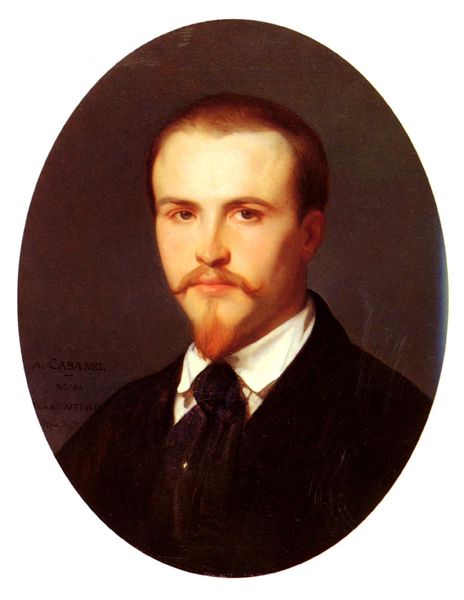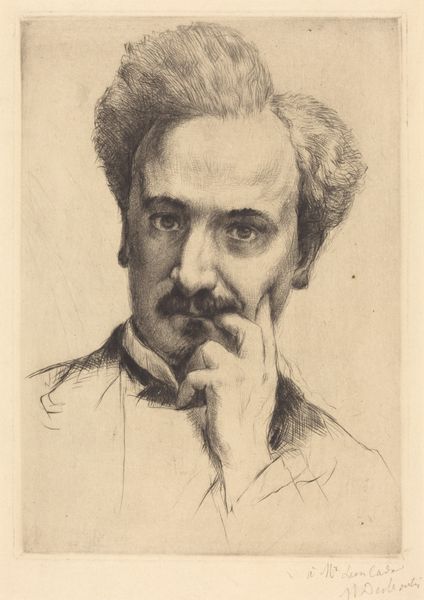
painting, oil-paint
#
portrait
#
16_19th-century
#
portrait
#
painting
#
oil-paint
#
academic-art
#
realism
Copyright: Public domain
Alexandre Cabanel captured Prince Gorchakov in paint, immortalizing his likeness with a deliberate gaze and posture. Consider the seemingly simple gesture of his arm across his body. It echoes the contrapposto of classical sculpture, a stance denoting confidence and control. This motif, inherited from antiquity, reappears in countless portraits across centuries, each time subtly shifting in its implication. Think of Roman emperors or Renaissance dignitaries, how they project power and stability. Yet, here, the gesture seems more restrained, perhaps indicative of a changing social order. What was once a symbol of unquestioned authority now carries a hint of self-awareness, or even vulnerability. This evolution speaks to our collective memory, a subconscious recognition of symbols transforming through time, each adaptation revealing new layers of meaning. It engages us on a deep, almost ancestral level. This very gesture has traversed epochs, evolving from a declaration of dominance to a nuanced expression of individual character.
Comments
No comments
Be the first to comment and join the conversation on the ultimate creative platform.
